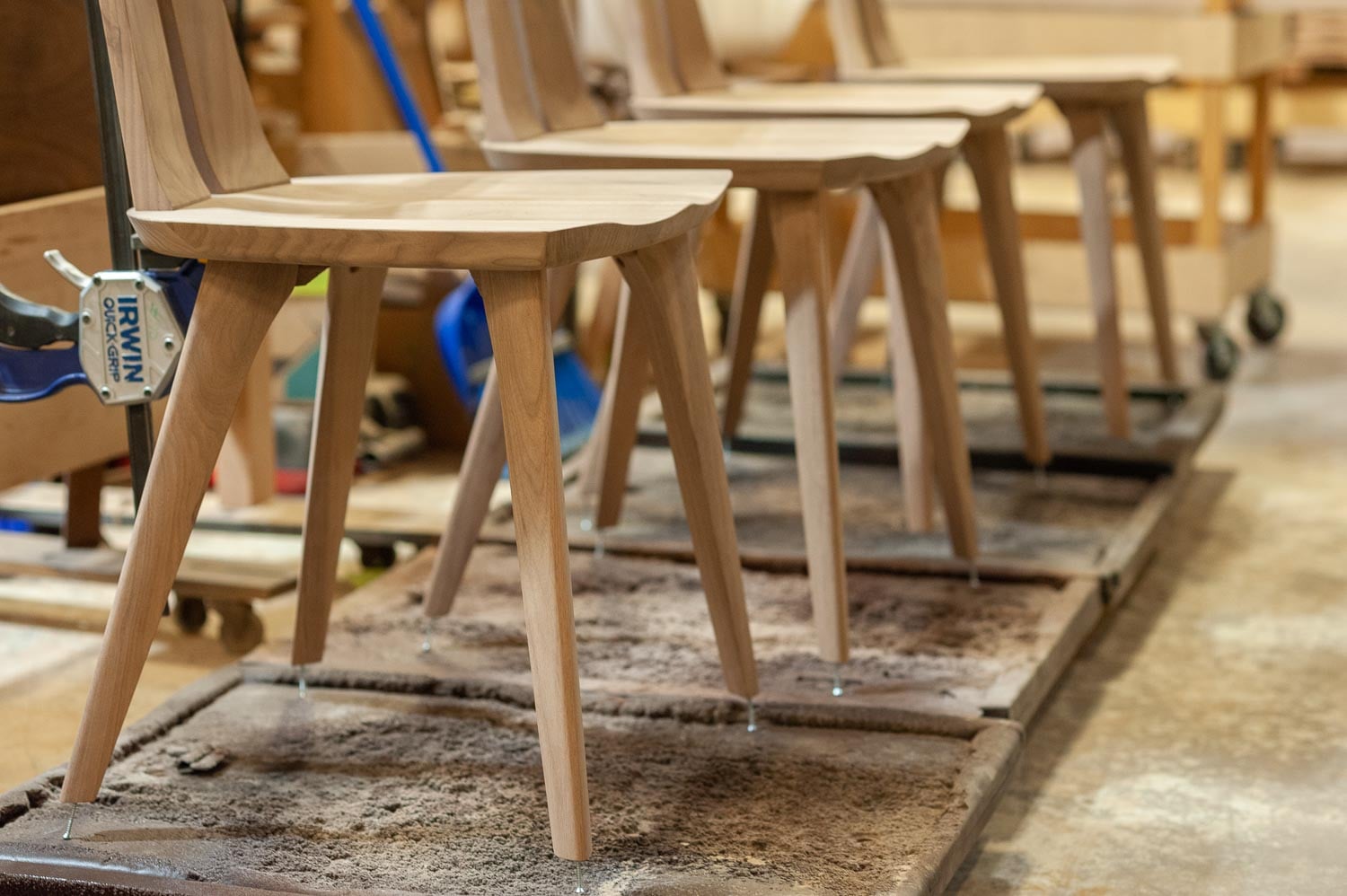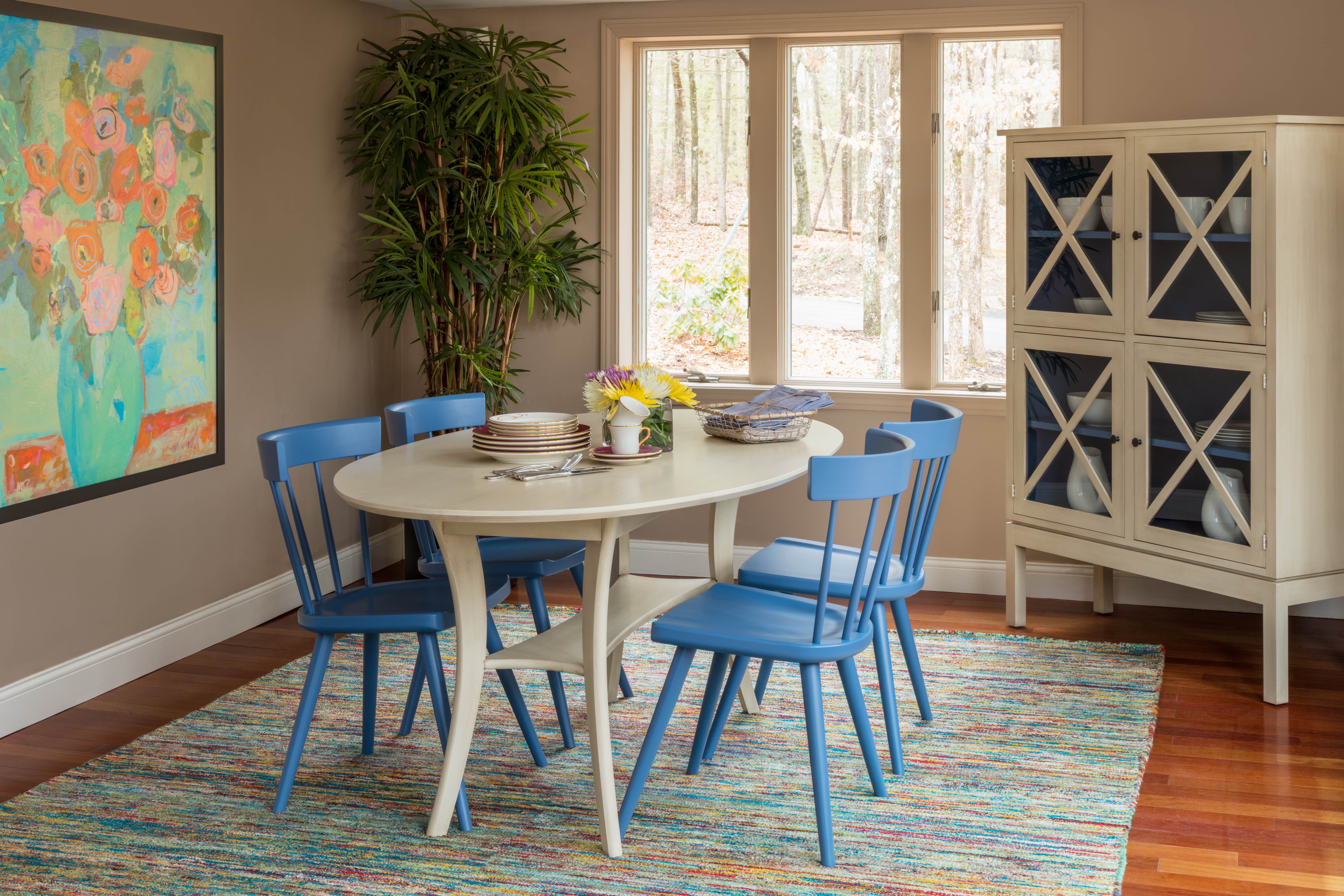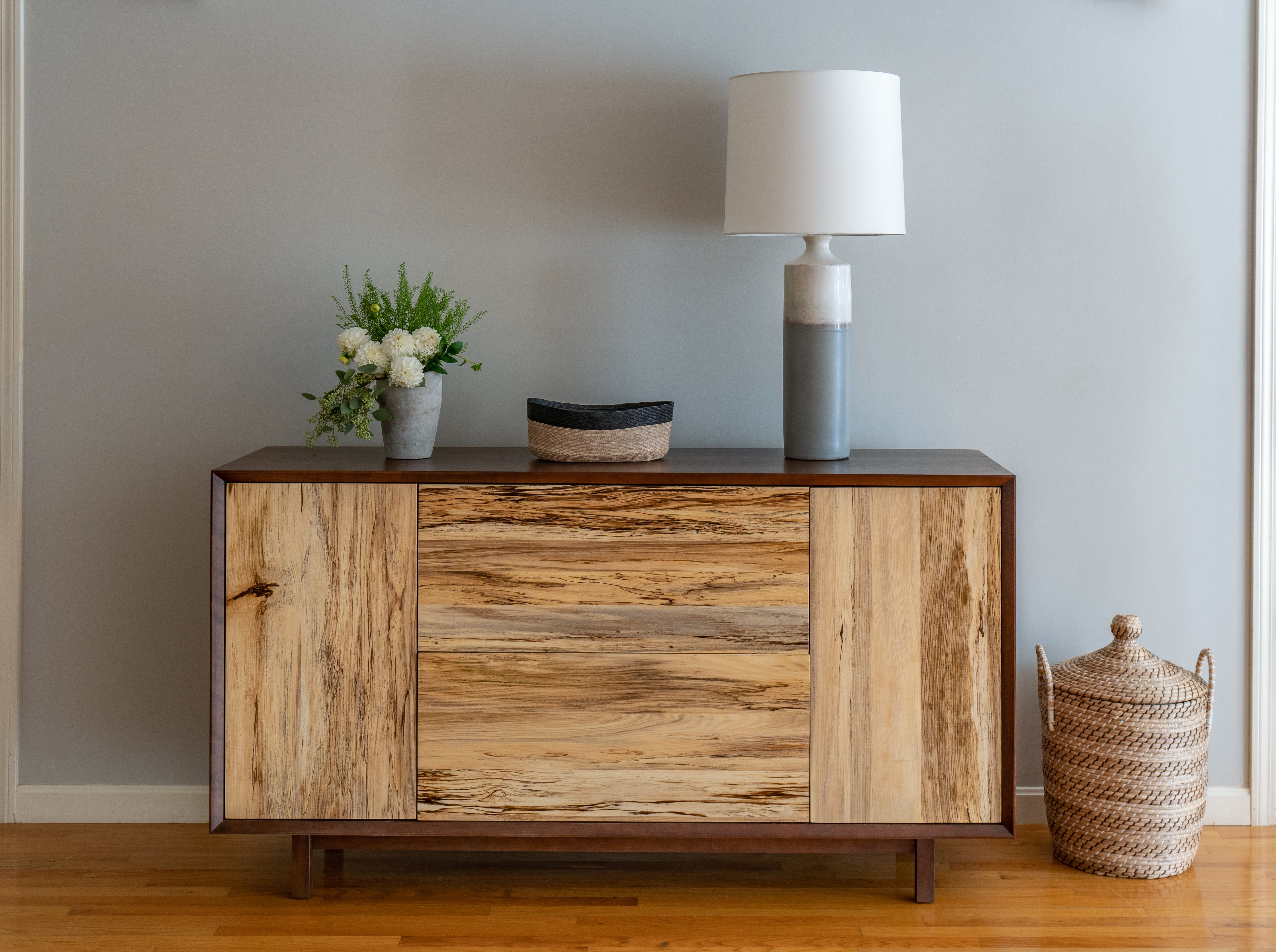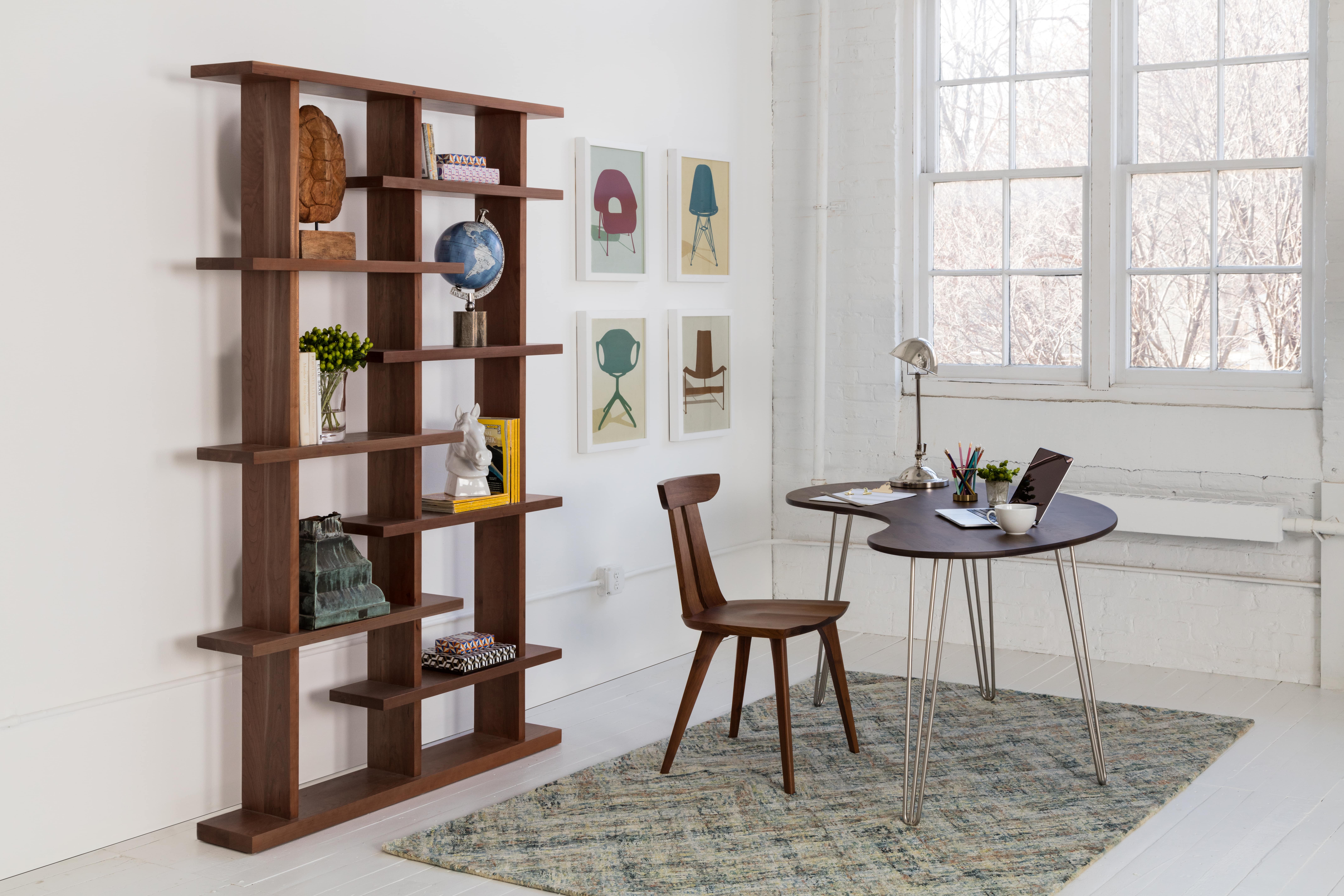Blog
A Guide to Wood Finishes: Paint, Stain, and Natural
There's a lot to think about when buying wood furniture. Do you prefer walnut, maple, or cherry Do you want the natural color of the wood to shine through or do you want a stained or painted finish
We're here to answer those questions, giving you an in-depth guide to wood finishes so you have all the resources you need before making an investment. We talked with Kelly Sullivan, a Design Consultant in the Acton showroom, to learn a little more about the wood finish options.

Types of wood finishes
Kelly says, "There are a lot of options for wood finishes when you're buying furniture. In general, you're choosing between paint, stain, and a natural finish option"”which can either be lacquered or hand oiled."
There are pros and cons to each finish option, and we're laying them out for you here so you can make the best choice for your home.
Paint
Painted wood furniture has several advantages"”the first being the ability to choose any color you want. Kelly details, "You have a lot of control over the design of the piece. You can achieve any look you want with paint. One of the more popular ones is a coastal look with whites and pastels."
As far as the appearance of the paint, Kelly says, "Factories usually do a sprayed finish so it's really smooth and consistent. And we typically paint birch or maple, simply because they're the more affordable solid woods."

When it comes to disadvantages, paint has a tendency to show scratches and stains a little more, whereas a natural finish conceals them better. "You also lose the natural grain of the wood," Kelly says, "which is an advantage or disadvantage depending on your preference."
When it comes to caring for your furniture, there's no product required and you want to stay away from furniture polish. Kelly recommends simply wiping it down with a cloth to keep it dust free and using mild dish soap, like Dawn, mixed with water if you get a sticky spill.
Stain
A stain is somewhere in between a paint and a natural finish on a piece of wood. Kelly explains, "Stain allows you to achieve a range of different colors from honey tones to dark java or espresso." And rather than the opaque finish of paint, it has a sheer finish and you can see the wood beneath it.
"The advantage of a stain," she explains, "is that you can preserve the beautiful grain of the natural wood while being able to customize the color." For example, you can take natural maple or cherry and achieve a variety of different looks based on your color preferences.

Like a painted finish, stained wood doesn't require special products for care. Avoid using a furniture polish as it can dull the look over time and wash stains with mild soap and water.
Natural
A natural finish on wood is one of the most popular options. Opting for a natural finish allows you to see the natural grain, variegations, and markings on the wood.
Within natural finishes, there are two options. Kelly explains, "You can do a catalyzed lacquer or topcoat finish which acts as a shell and helps prevent spills, stains, and watermarks. Or, another beautiful option is oiling the wood. This gives a matte finish and has a smooth, buttery feel."
If you choose the lacquer finish, you're protecting the piece from potential wear and tear. However, because it has a sheen to it, if your piece is showing marks or scratches you have to take down the whole top layer and refinish it.

"The benefit of doing an oil," Kelly says, "is that there's no top layer. So you can buff away little imperfections like a small scratch or stain with a fine a steel wool and add a little more oil."
It's important to note that in order to extend the life and look of your piece, you'll want to oil your furniture using a furniture oil, like linseed, about once a year or if it looks dry.
With both a lacquer and oil finish, if your piece is showing wear and tear, you can take down the whole top and refinish it a few years down the line. "Your piece of furniture will look brand new again," Kelly describes, "whereas with a stain or paint finish, that option isn't available to you."
Learn more about the natural characteristics of wood with our Homeowner's Guide to Natural Wood in Furniture.
How much do finishes cost
There's no simple answer to this question and Kelly explains that "some wood furniture will be more costly to oil whereas others are more expensive to paint or glaze."
"The main takeaway, " she says, "is that if the natural wood is high-quality- like a solid heartwood cherry- then the option to oil is going to be available and at a premium cost."
When it comes to a paint finish, she describes, "Most our craftsmen who paint furniture will use a wood like birch or maple which tends to be less expensive."

Come into a showroom to learn more
Deciding between finishes will come down to your lifestyle and your style preferences. Some may absolutely love the look of natural wood, while others will prefer the clean look of paint and the option to choose any color they like.
Kelly says, "I personally think seeing the grain and natural markings make the piece unique! I love a natural walnut wood with a matte clear coat to finish. But, I also love the idea of having an accent piece in a room in a painted finish, preferably in a fun pop of color."
We're here to help with any questions you have"”from wood finishes to custom upholstery. Come into a showroom near you to see our selection of locally made hardwood furniture and talk to a designer.
Learn more:
- Why is Wood Furniture so Expensive A Detailed Breakdown
- Dining Chairs: Upholstered vs. Wood
- Handmade Furniture: A Tour of a Local Wood Shop

Author: Guest Author

